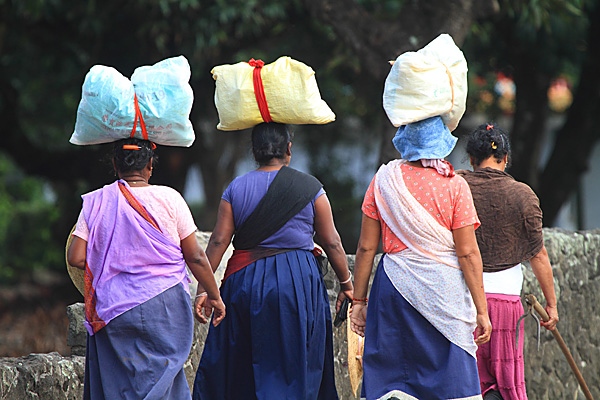Mauritius: Mauritius People Profile
2013/08/18
The island of Mauritius has a population of 1.25 million while Rodrigues island has about 38,000 residents. Agalega and Saint Brandon combined have a population of less than 300.
The population of Mauritius is estimated at 1.295 million today, compared to 1.291 million at the 2012 census. The country is densely populated with 630 people per square kilometer (1,636/sq mi), which ranks 19th in the world.
Mauritius Demographics
There is no information available about the ethnicity of Mauritius as questions related to ethnicity were removed from the census. The country is multi-ethnic and multi-cultural, however. Most Mauritians are multilingual, speaking English, French, Creole and Asian languages.
Mauritius was discovered by Portuguese explorers in 1507, who found no native inhabitants. The Dutch settled the island in the mid-17th century and abandoned it later at the beginning of the 18th century. The island then became a French colony and was renamed Isle de France before the British took control in the early 19th century. It remained under British rule until 1968. Some inhabitants of Mauritius today are descendants of French and British inhabitants. There are also populations of Indian descent (Indo-Mauritian), Creoles, Sino-Mauritians, Frenco-Mauritians and Chinese.
Mauritius is religiously diverse with no majority religion. 49% of the population are Hindus, followed by Christians (32%), Muslims (17%), and Buddhists (0.4%).
Mauritius Today
Mauritius is a popular tourist destination and its population remains fairly stable as the island nation has limited room for growth. The population growth rate is currently 0.4% per year.


Ethnic groups, languages, and religion
Approximately two-thirds of the people is of Indo-Pakistani origin, most of whom are descendants of indentured labourers brought to work in the sugar industry during the 19th and early 20th centuries. About one-fourth of the people is Creole (of mixed French and African descent), and there are small numbers of people of Chinese and Franco-Mauritian descent.
Although English is the official language, it is spoken by a very small % of the people. Creole, a French-based patois, is spoken by about four-fifths of the people and is the lingua franca of the country. Bhojpuri, an Indo-Aryan language, is spoken by one-tenth of the people, and French is spoken by a small %. Other languages spoken on the island include Hindi, Chinese, Marathi, Tamil, Telugu, and Urdu. Mauritians commonly speak two, three, or even additional languages, and the educational system supports a wide range of language instruction.
Religious affiliation varies: about half of the people is Hindu, about one-third Christian (the majority of which are Roman Catholic), and—with the exception of a small group of Buddhists—the rest are Muslims.
Settlement patterns
The people density in Mauritius is the highest of African nations and is part the highest in the world. Overpopulation became a critical problem next the eradication of falciparum malaria by the early 1950s led to a sharp increase in people. Driven by government policy, supported by all the Mauritian religious communities, and assisted by the rapid pace of economic increase, the rate of natural increase dropped rapidly in the last decades of the 20th century, and it is presently below the world average. Emigration, primarily to Britain and France, as well helped slow the annual increase rate.
The birth rate remains well below the world average, while the death rate is similar to the world average. Life expectancy—about 70 years for men and additional than 75 years for women—is higher than the world average and is well above the average for African nations. About half of the country’s people is younger than age 30.
- Mauritius News
-
- AFGHANISTAN: UNWTO: International tourism – strongest half-year results since 2010
- BOTSWANA: Why governments need to support the financial sector to meet the unserved needs of smallholder farmers
- BOTSWANA: International Arrivals To Africa Reach More Than 18 Million In 2017
- BOTSWANA: Africa: USA-Africa - No Policy? Bad Policy? or Both?
- BOTSWANA: Africa: U.S. State Department To Get Experienced Diplomat in Key Africa Post
- BOTSWANA: Africa’s economic growth in 2016 was driven by East Africa
- Trending Articles
-
- CAMEROON: Cameroon: English-speaking Students Do Not Return to School
- CAMEROON: Cameroon: Giving Priority to Education
- BOTSWANA: Africa: U.S. State Department To Get Experienced Diplomat in Key Africa Post
- RWANDA: Rwanda: RDB's Good Problem - More Gorillas, Less Habitat
- RWANDA: Women Make Up More Than Half of Rwanda's New Cabinet
- UNITED STATES: Kenya Airways Gets Permit For Direct U.S. Flights






.gif?1356023993)

